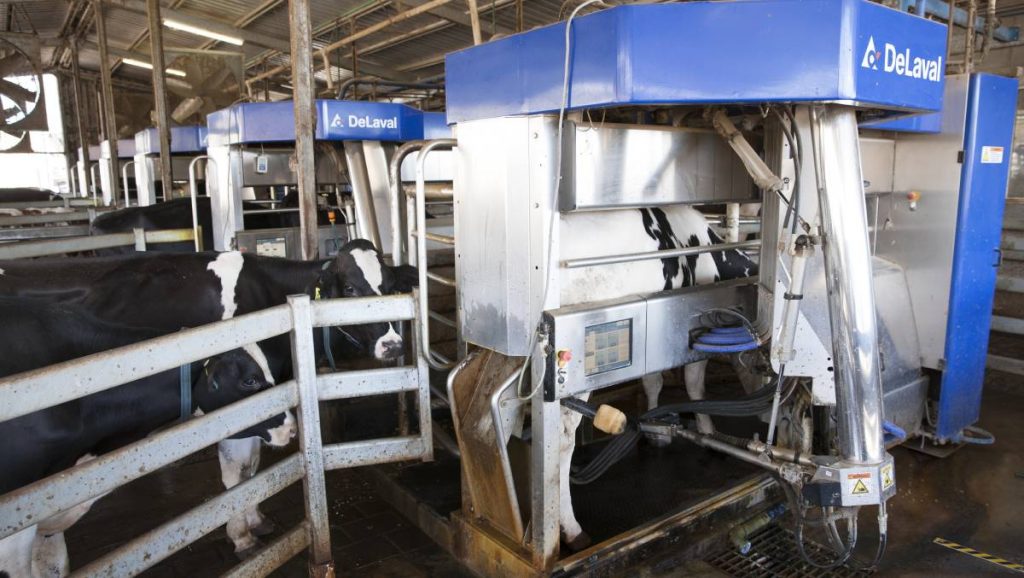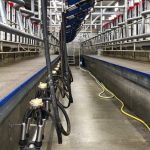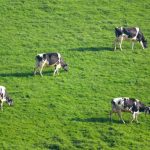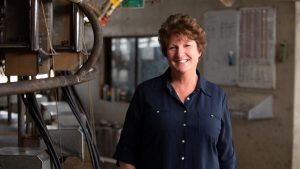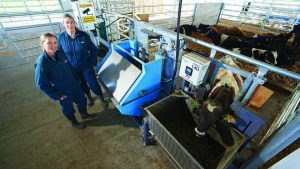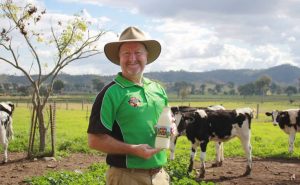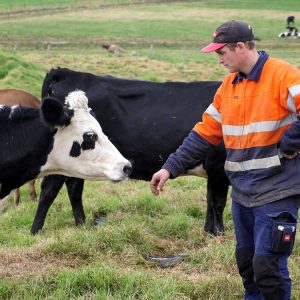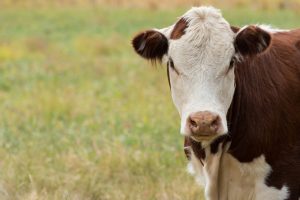
The Milking Edge project, spearheaded by Dairy Australia, NSW Department of Primary Industries and DeLaval, is working with commercial AMS farms across Australia to extract data and provide a more accurate picture of robotic performance.
NSW DPI Milking Edge project leader Dr Nicolas Lyons said that 20 of the 46 AMS farms were monitored on a monthly basis as part of the International AMS Key Performance Indicator Project, collecting data from Australia, New Zealand, Argentina, Chile and Ireland.
Dr Lyons said the AMS KPI Project was in its fourth year and the data was helping farmers and potential investors to understand and benchmark current farm, cow and robot performance, as well as helping Milking Edge to develop a dynamic model that would help farmers understand what is achievable and optimise performance.
“We’re seeing a wide range in performance between farms,” he said.
“The average farm could increase its number of cows or capacity by up to 60 per cent, so we are working hard to develop tools and resources to help farmers that want to achieve this.”
A survey of participating AMS farmers found that all were benefiting from the data and 75pc indicated that having access to monthly reports gave them more control over their business and helped them to make better decisions.
Wayne Clarke, Casino, NSW, owns one of the 46 commercial AMS farms in Australia and said he believed robots were the future of the dairy industry.
Mr Clarke said the production and economic performance data collected from AMS farms operating under Australian conditions was “proving what it was capable of” and would give non-AMS farmers more confidence to take advantage of the technology.
“The data is going to help farmers identify what opportunities exist and to take advantage of the technology and advance their profitability, not to mention ending the repetitive manual task of applying cups to cows” he said.
Dr Lyons said Milking Edge was also supporting the AMS Financial Project for the fourth year, which involved comparing datasets from 14 AMS farms with data from Dairy Australia’s Dairy Farm Monitor Project.
“Overall we’re seeing the average physical and financial performance of pasture-based AMS to be very similar to those of conventional farms,” he said.
“We have also noticed a wide range in labour efficiency, robot utilisation and pasture utilisation on AMS farms that have been identified as key drivers of profitability.”
Milking Edge has stepped up its training, extension and communications activities in 2019 to help more farmers consider, invest and operate AMS successfully.
Dr Lyons and his team visited almost all dairy regions across Australia and engaged with current and prospective AMS farmers, as well as members of the Young Dairy Network in Bega, NSW, Nowra, NSW, and Tasmania.
Aubrey Pellett, a conventional dairy farmer from Gippsland in Victoria, said the idea of AMS was appealing.
“As a dairy farmer with fairly old milk harvesting equipment, it is excellent to see the industry provide an independent view and assessment of how AMS can suit the industry and my operation,” he said.
“Milking Edge is a key project to help farmers understand how the technology can suit your farming systems.”
The conversation around AMS is increasingly shifting online with Milking Edge hosting the first Global AMS R&D Webinar in 2019 featuring 21 AMS experts from 13 countries sharing their knowledge with an audience of 174 people from 24 countries.
In addition, Milking Edge hosted regular training and discussion webinars with AMS farmers and advisers, increased its social media engagement, and launched an AMS Community page on www.extensionaus.com.au, which has received more than 5000 page-visits from 1400 unique users to date.
“During 2019 we conducted five webinars, and these have since been viewed more than 250 times each,” Dr Lyons said.
“The first online module on general aspects of AMS is already available, and the Reproduction and Incentives modules are close to being launched too.”
Milking Edge is continuing to shape its communications and engagement strategy in 2020, delivering relevant and timely AMS intelligence to an eager audience.
